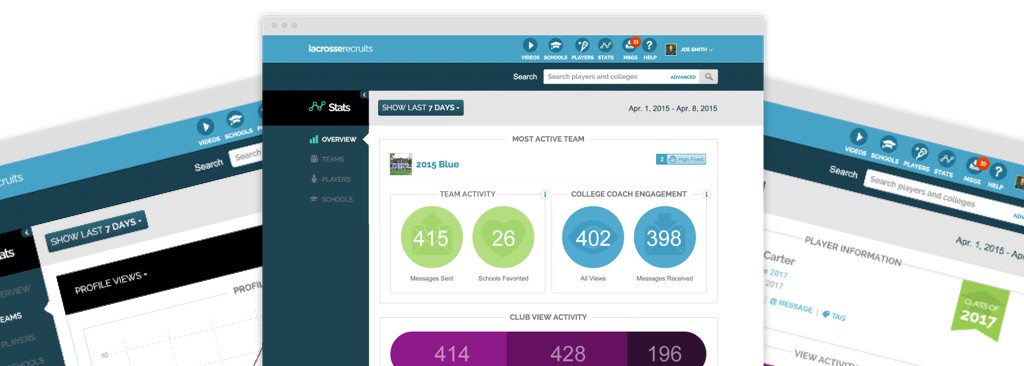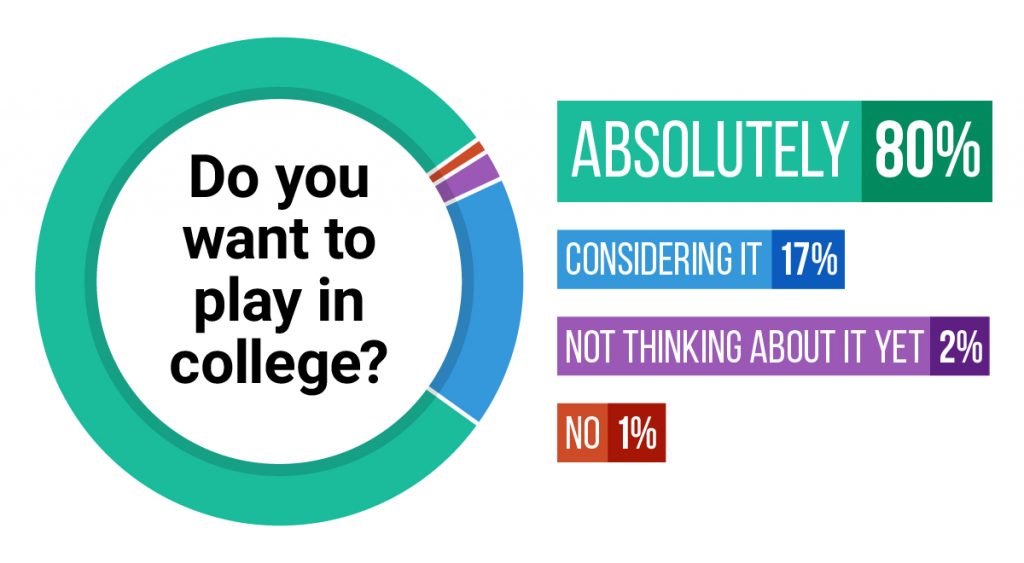Introduction
If your organization’s recruiting plan does not include a two-tiered approach of student-athlete action and tangible staff monitoring, your recruiting practices are broken.
While this may sound extreme, it is the truth.
Now more than ever, families expect their clubs to assist them with recruiting. While relying on methods that have worked in the past may still yield success, there now exist better, more efficient ways to implement these same practices.
The increased presence of technology in our daily lives affords users access to data and services everywhere. As a result, expectations are that this is possible in every walk of life, the club sports space included. The ability to show a family your assistance – providing access to what steps you are taking to help – has created the responsibility to do so.
Recruiting is a two-way street. By first providing a student-athlete with tools to drive the process, and then monitoring and guiding this process tangibly, a club will be able to successfully provide a valuable, fully transparent service to their families.
Empower, Then Monitor
The recruiting process must be player-driven. Student-athletes need to take charge of their own recruitment. College coaches are interested in recruiting players, not proxies.
For a select group of elite players, the recruiting process takes care of itself. They play and college coaches fall over themselves trying to woo them into their programs. The other 99% of aspiring collegiate athletes need work hard to find their collegiate home. The good news is they’re overwhelmingly willing to put in the work. After all, they’re athletes. Drive and motivation are innate qualities they express everyday on the field.
We’ve noticed that since 2008, we have noticed a two-tiered approach that can help to steer clubs in the right direction.
1. Empower
The first (and often, most crucial) step is to arm student-athletes with the tools to be in control themselves. Be them technology or another system, this means providing the student-athlete resources, guidance and advice on how they can drive their own process.
Doing so serves two important functions:
Eliminates friction. Many clubs like to boast of college contacts that preclude them from changing their current methods. However, if you have a rolodex of collegiate contacts, make it available to everyone, club-wide. Eliminate the step where every player has to bug you contact info.
Enables Assistance for Everyone: If have 100 student-athletes at your club, our numbers show 80 want to play in college. Spearheading the process for each one of them is a tall task. If you have 500 kids on your club, that means 400 want to play in college. Spearheading each of their process goes from unlikely to downright impossible. However, by empowering each athlete to handle their own process, the onus is on the player to get things going.
2. Monitor
The second step, and one that many organizations ignore simply due to lack of a defined system, is to monitor player activity. This allows you to step in to course-correct – use your expertise that comes from years of experience to give guidance when necessary.
Therefore, student-athletes are in control of their process, but you are using the things you have always done in a more successful, direct and targeted way.
Let’s take a look at an example of monitoring as it’s done on our platform. But again, the platform is not as important as the underlying point: By monitoring player activity, your club’s assistance is better target to assist those that most need it.
In these stats pages (which organizations on our platform use to monitor their players), we can see how monitoring works.
In the first first example below, we can see the top player (Maria) is serious about playing in college, and is receiving plenty of responses and looks. She has been sending messages, and we know she is well on her way.
Conversely, we can see other players whose process seems to have stalled (Elsa) that may need some extra support or outreach. Per her activity, it seems to have began but then stalled out, with her last activity having come in July.
Conclusion
Families have high recruiting expectations from clubs, and these can be met by implementing tools to empower athletes to act on their own while tangible support from the club can be felt along the way.





